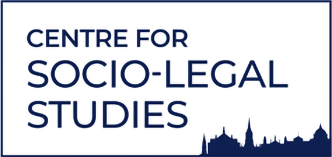
Unfreedom of Information in Private Entities: What Can We Do When Vital Research Participants Won’t Talk to Us?

What can researchers do in an environment where access to relevant information is constrained by corporate entities? I confronted this problem when I conducted primary research in the summer of 2022 in an attempt to understand how Aadhaar, the Indian biometric identification system, is being deployed by private companies to identify workers. The aim was to understand its continuing use, given that the Supreme Court of India had outlawed its mandatory use by private companies in 2018. The research sought to unearth the conditions under which Aadhaar was used given that biometric authentication was subject to strict legal and constitutional scrutiny. Certain apps were identified which sought Aadhaar details of the workers they mediated. To understand the social experience of seemingly innocuous processes employing the use of Aadhaar and to receive information about inaccessible interfaces of the app, I conducted semi-structured interviews.
Interviewing allowed the collection of data which could not be gauged from secondary sources or app usage alone. This included information about the working of the app and the way it was embedded in a particular context of work. I sought to collect data on the process of onboarding of workers on apps, the alternatives available to providing Aadhaar, the process of taking consent before providing Aadhaar details etc. The participants were chosen from various sources for a comprehensive picture. These included gig and domestic workers, app developers and ground mediators (trainers) between the companies and the workers. As I sought to understand the development of apps and design choices, business elites of the companies were explicitly not chosen as potential participants. Instead, the main focus was on employees who implement the decisions made by the management, to understand the design choices they make. Further, the semi-structured interviews led to co-construction of knowledge about the mundane practices of accessing work using apps and participants’ varied experiences with Aadhaar which shaped their understanding of the digital artefact. It allowed the participants to reflect on a compulsory, immediate and common process with some degree of scepticism.
Due to the banality of the apps and omnipresence of Aadhaar, with no public discourse surrounding the topic, I expected to be able to reach plenty of participants who would be open to share their experiences. However, contrary to my expectations at the research design stage, interview participants were rather hard to come by.
The participants were initially approached through personal messages over LinkedIn or WhatsApp and snowballed through personal contacts and the other participants. Across both platforms, the participants were largely unresponsive. Any contact led to a protracted and negotiated process over WhatsApp calls to explain the purpose of the research and the role of the participant. Even with the guarantee of complete anonymity for the purpose of academic research, the participants were exceptionally wary and often refused the interview just before it was scheduled. Access was restricted largely because all the participants were organisationally tethered to private entities such as companies and workplaces (residential compounds). While corporate elites have been analysed as inaccessible research subjects, similar difficulties percolated across the corporate structure even for non-managerial employees. The information sought related to processes of app development and design decisions which is not publicly available knowledge but also not strictly a secret. Potentially due to the ambiguous nature of such information, the current employees were usually unwilling to speak. They cited confidentiality of all information and their presence in the company as factors prohibiting their participation.
Often at the time of refusal, they suggested approaching employees through the company so that a complete assessment of the request could be made by the management of the company. This led me to approach the higher management using official channels as well as cultivated contacts. However, no response was received. Despite the lack of interaction by the management with my request, this accentuated the ways in which the interview relationship was actually tripartite, as it was implicitly mediated by the organisation that the participant was embedded in. If the participants did agree to the interview, it seemed like an act of rebellion on their end. While I empathized with their concerns, I was also surprised given the measures implemented to protect them. These included the written ethical approval containing the binding promise to enable the participants to review the transcript and omit any sensitive information. This highlighted the way information is differently perceived by interviewers and participants, as some of them equated research participation to unethical whistleblowing!
After a period of time, the continuing journey into the inner depths of LinkedIn led me to ex-employees. This emerged as an important solution to my problem. The erstwhile employees also emphasised the need for confidentiality, but were able to share their experience, detached from a workplace. I learnt many lessons from this experience. While a public organisation or state entity can be requisitioned for certain information using information laws, the private sector is much more opaque in its working. As hoarders of key information, the research sites remain important for many disciplines. The ‘hierarchical anxiety’ of participants i.e., their presence in an unclearly defined but explicit hierarchy within an organisation clearly percolates through the research process. This organisational backdrop adds another layer between the interviewer and the participant which is important to account for from an ethical standpoint. Recruiting ex-workers alongside current employees can be a valuable workaround to mitigate such ethical risks.
Former employees are free from certain constraints, such as the fear of retaliation of the employer and thus able to speak more freely, where current employees are unable or unwilling to share their experience. Exploring and reflexively explaining this method can thus help close the vast methodological gap to study private organizations.

